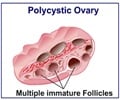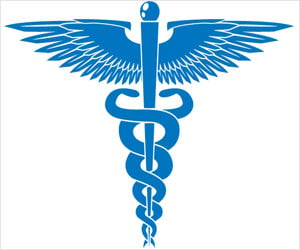- Singh GK, Sen D, Mulajker DS, Suresh MS. Acanthosis nigricans associated with transitional cell carcinoma of the urinary bladder. Indian J Dermatol. 2011 Nov-Dec; 56(6): 722- - ( DOI: 10.4103/0019-5154.91837 PMID: 22345779.)
- Phiske MM. An approach to acanthosis nigricans. Indian Dermatol Online J. 2014 Jul-Sep; 5(3): 239-49 - (DOI: 10.4103/2229-5178.137765 PMID: 25165638.)
- Know more about Acanthosis nigricans – American Academy of Dermatology (AAD) - (https://www.aad.org/public/diseases/color-problems/acanthosis-nigricans#overview)
- Acanthosis nigricans - (https://www.mayoclinic.org/diseases-conditions/acanthosis-nigricans/symptoms-causes/syc-20368983)
- Introduction to Acanthosis nigricans - DermNet NZ - (https://www.dermnetnz.org/topics/acanthosis-nigricans/)
- Acanthosis nigricans – National Organization for Rare Disorders (NORD) - (https://rarediseases.org/rare-diseases/acanthosis-nigricans/)
What is Acanthosis Nigricans?
Acanthosis nigricans (AN) is a skin condition in which there are patches of velvety brown / black discoloration (hyperpigmentation) and thickening (hyperkeratosis). It usually appears in the folds and creases of the skin, including the armpits (axillae), neck, groins, belly button (navel), forehead, and joints of the fingers or toes. Acanthosis nigricans generally affects individuals suffering from obesity or prediabetes / type-2 diabetes mellitus. Children who exhibit symptoms of AN are more likely to develop diabetes later on in life. Acanthosis nigricans is not a disease per se and is neither contagious nor harmful, but is sometimes a warning sign of an underlying disorder, requiring urgent medical attention.
Origin of the Term
The term “Acanthosis nigricans” was first proposed by Unna, from the Greek “Acanthus” (“thorn”) and the Latin “nigricans” (“becoming black”). The condition was first independently described by Pollitzer-Janovsky in 1891.
Prevalence of Acanthosis Nigricans
The prevalence of AN varies between 7-74%, depending on age, race, frequency of type, degree of obesity and hormonal (endocrinal) disorders. The prevalence has increased in recent times due to rapid increase in individuals with obesity and diabetes.
How do you Classify Acanthosis Nigricans?
Acanthosis nigricans is classified into the following types:
- Obesity Associated AN: This is the most common type of AN, which occurs at all ages, but more common in adults.
- Syndromic AN: This is associated with a syndrome e.g. Cushing syndrome, polycystic ovarian syndrome (PCOS), total lipodystrophy, hyperinsulinemia, and Crouzon syndrome.
- Malignant AN: This type of AN is commonly associated with cancer of the gut (90%), especially stomach cancer. In 25-50% of cases, lesions are usually confined to the tongue and lips.
- Benign AN: Also called acral acanthotic anomaly, it is characterized by benign (non-cancerous) thick velvety lesions on the upper aspects of the hands or feet. This is most common in people of African American ancestry.
- Hereditary Benign AN: This is inherited as an autosomal dominant trait and can occur at any age.
- Drug-induced AN: Although uncommon, it can be induced by certain types of drugs, including systemic corticosteroids, insulin, niacin, estrogen, methyltestosterone, fusidic acid, diethylstilbestrol, triazinate, protease inhibitors, and melanocyte stimulating hormone.
- Mixed AN: These patients exhibit mixed symptoms of various types of AN.
What are the Causes of Acanthosis Nigricans?
The major causes of AN are briefly highlighted below:
- Insulin Resistant Diabetes Mellitus: This disease can be an underlying cause of AN. It is therefore important to get an early diagnosis, so that the disease can be kept under control. This is likely to prevent AN.
- Drug Reaction: Certain types of drugs can cause AN, including strong corticosteroids, birth control pill and niacin, among others.
- Hormonal Disorder: An underlying hormonal disorder can cause AN. These include PCOS, hypothyroidism, Cushing syndrome, Acromegaly, and Addison's disease.
- Cancer: Cancer could be the underlying cause of AN, particularly if the symptoms appear suddenly and rapidly. Common types of cancers that can cause AN include cancer of the stomach, liver, or colon.
What are the Symptoms & Signs of Acanthosis Nigricans?
Acanthosis nigricans can be recognized by the following distinct symptoms and signs:
- Brown or black patches on the skin
- Thickened velvety skin
- Presence of skin tags
- Itching
- Bad odor from the affected site
Common sites of AN include the following:
- Armpits
- Groin
- Back of neck
- Elbows
- Knuckles
- Knees
- Navel
- Beneath the breasts in women
- Face
- Female genitalia
Less common sites of AN include the following:
- Lips
- Mouth
- Eyelids
- Palm of hand
- Sole of feet
- Nipples

What Could Cause the Rapid Appearance of Symptoms?
The speed in which symptoms of AN appear is of the utmost importance. It generally takes a long time for AN to manifest, ranging from months to years. If there is a sudden onset of symptoms, it indicates that the underlying cause could be cancer. It is therefore very important to consult a dermatologist immediately.
How do you Diagnose Acanthosis Nigricans?
Acanthosis nigricans is diagnosed by the following approaches:
- Clinical Observation: A trained dermatologist will easily be able to diagnose AN.
- Blood Tests: A blood test can help to diagnose any underlying causes of AN. These may include the following:
- Blood Glucose Estimation: This will help to diagnose type-2 diabetes mellitus.
- Blood Insulin Estimation: Elevated levels of insulin may indicate hyperinsulinemia.
- Hormone Assays: Various hormonal assays for the suspected underlying hormonal disorder may be performed.
- Biopsy: If cancer of the gut (most common in AN) is suspected, an endoscope can be used to take a tissue sample to see if cancer is present.
What are the Risk Factors for Acanthosis Nigricans?
Acanthosis nigricans can occur in anyone. However, certain individuals are at a greater risk. The individuals who are at the greatest risk include the following:
- Obese or overweight individuals
- Individuals of African, Native American, Caribbean, or Hispanic descent
- Family history of AN
How do you Treat Acanthosis Nigricans?
Treatment follows a two-pronged approach. One involves dermatological treatment, which generally aims at improving the appearance of the skin (cosmetic effect). The other is corrective therapy, in which the underlying condition is treated.
- Dermatologic Therapy: A dermatologist may treat the symptoms such as darkened skin coloration, thickening of the skin, odor, itchiness, and discomfort. Various types of medicated creams, lotions, ointments, or gels may be prescribed. Antibiotic creams or antibacterial soaps may be used for decreasing the odor and relieving discomfort. Retinoids may be used to clear the skin. Moreover, laser therapy may be used to reduce the skin thickness.
- Corrective Therapy: When a diagnosis is made, the definitive corrective treatment strategies may be applied to treat the underlying condition(s). The treatments may include the following:
- Correction of hyperinsulinemia by medications and diet.
- Correction of hormonal disorder(s) by medications or hormone therapy.
- Weight loss by regular exercise for obesity-associated AN.
- Discontinuation of specific medicines in case of drug-induced AN.
- Surgical excision (cutting out) of underlying tumors.













